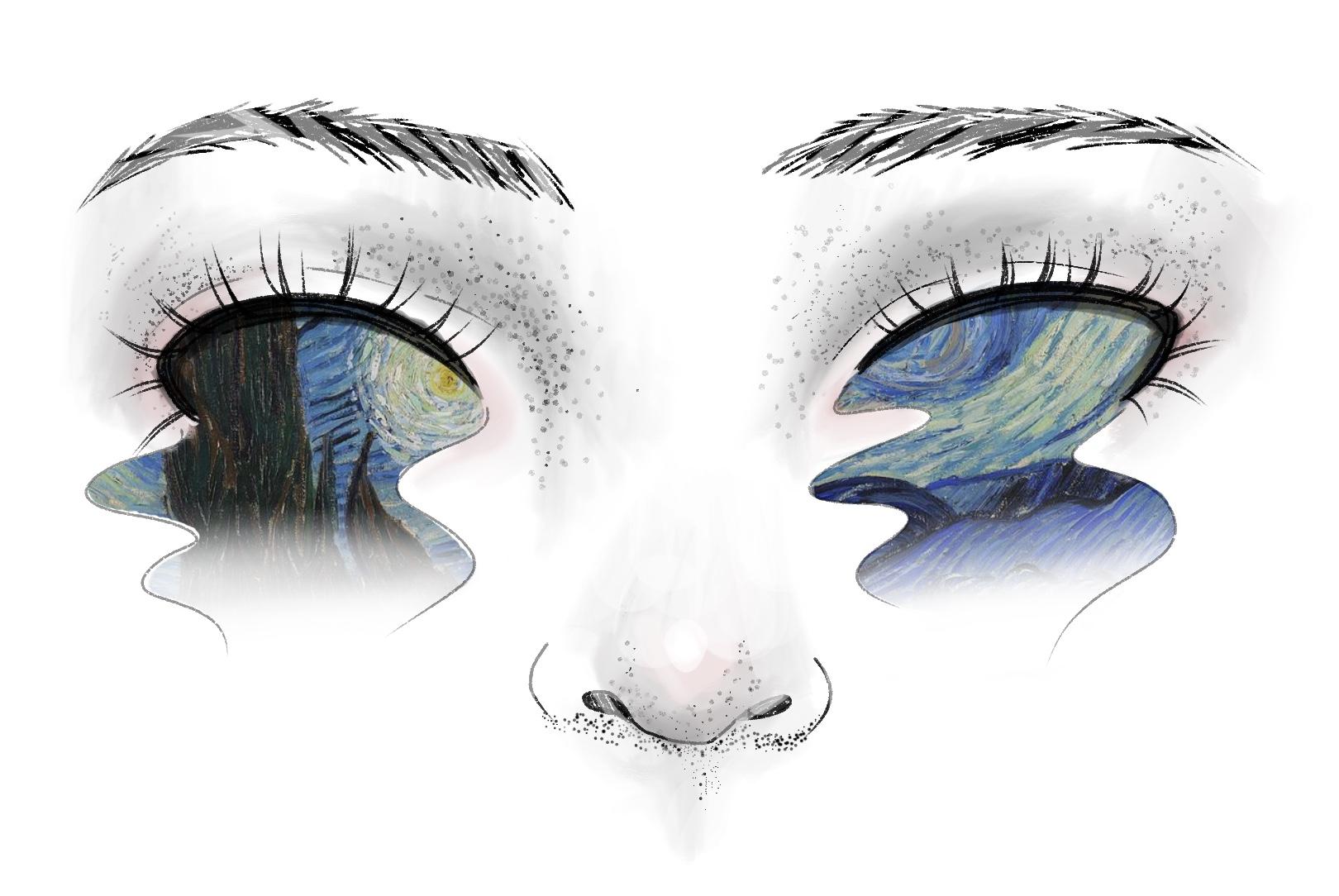by Melissa Paz-Flores (‘22) | November 19, 2021

You’re sitting in a concrete warehouse, surrounded by projectors showing irises, starry nights, and self-portraits of Dutch impressionist Vincent van Gogh. This is the “Immersive Van Gogh Experience” in San Francisco.
“Van Gogh: The Immersive Experience” is promoted as a “360-degree digital art experience.” Its location in the SVN West (formerly known as the Fillmore) boasts 30,000 cubic feet of projected paintings. The production company that put on the exhibit, Lighthouse Immersives, has Van Gogh exhibits worldwide. Other locations include Boston, Sydney, and Singapore. The experience is created by a montage that runs on a 25-minute loop, splicing and dicing elements of Van Gogh’s 300+ drawings, sketches, and paintings, all set to a custom classical music soundtrack. These exhibits have become more and more popular because of his use of bright colors and brushstrokes—they translate nicely into a digital format. The caveat? The pricing. Ticket prices for the immersive experience are dynamic, meaning they fluctuate based on time of day and popularity, some going as high as $100 for a basic ticket. I snagged three tickets at $55 a pop.
I got there around 4 P.M. on a Saturday. After checking in and getting lost in the massive warehouse, my group and I were greeted by an enormous dark room, which was the main exhibit. The room was filled already, with visitors situating themselves in circular “COVID pods.” It seemed like we had stumbled upon the room well before our time slot was called because as soon as we sat down, the show had ended. There weren’t any rules as to how long we could stay there, so I decided to hang back for another round. The opening scene started with ominous, heart-racing music and a questionable scribble of flies with red eyes. Throughout the experience, the exhibit bounced back and forth between peaceful paintings of nature and startling images of humanity. The Starry Night series came and went quickly, and just like that, the second loop of video was over. We were then ushered to the exit, where there was a conveniently placed gift shop. Socks with The Starry Night printed on were $20. The exhibit was selling all kinds of merchandise with his most famous paintings slapped on—from yoga pants to face masks.
To be honest, the experience was slightly underwhelming. I had seen other exhibits on social media that had more immersive rooms and activities, such as a VR experience. While some of his works were moving, it all felt like a money grab to me. To fully grasp the meaning of each painting, one needs to know about Van Gogh’s destitute and depressing past. Ironically, he only sold one painting in his lifetime. However, I do think it is worth visiting once to experience “immersive” artwork.
Eliana Shin (’22) agrees: “I liked the show itself! I felt that the music and visuals were paired expertly and can appreciate how much work must have gone into engineering this multidimensional experience. I think I enjoyed it enough that it was worth it, but I can see how it can also be objectively a projector show with really loud music.” She also notes the importance of having prior knowledge before enjoying experiences like these: “If I hadn’t recognized the pieces they played… I definitely wouldn’t have liked it too much.”
The exhibit is open until early January. But to be frank, I would rather go to the SF MOMA for free than pay $55 for a 25-minute projector show—it supports featured artists rather than a money-hungry “immersive experience” company. Art doesn’t need animation to be profound.





































































